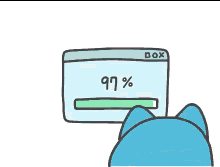Video games are a serious business. It’s a billion-dollar industry that’s rife with innovations, cutting-edge technology, and forward-thinking, consumer-oriented people.
All of the things that retail still struggles with.
Even in the more basic things — ones that retail should’ve solved generations ago — video games are head and shoulder above other industries.
Take queues, for example. Waiting isn’t unique to just shops and banks, but video game developers have, over the years, amassed incredible knowledge as to how to deal with queues.
A seamless experience with barely noticeable queues is something that both gamers and shoppers want. So maybe it’s time to take a few pages from the game developers’ book?
Let’s talk about the four main lessons the retail industry can learn from video games.
Minimization of wait times

If you’ve ever tried to play competitive multiplayer games, you know the restlessness that comes with having to wait for a new round to start.
But it’s not only about queues when matchmaking with your friends. There are all sorts of wait times when it comes to video games.
One of the more pronounced is loading times. Back in the day, two separate levels or even screens would have ample loading times to ensure all the objects and effects would be ready.
This stems from slower operational speeds of early-generation computers.
Players may have been more forgiving in the olden days, but as time went on, loading became more and more of a problem. Video games are by design supposed to be an immersive experience, and anything that breaks this immersion even a bit is a huge downer.
Nowadays, seamless loading between levels is something to be expected. Even video games with vast areas aim to never bore the players with waiting for the fun to continue.
The lesson to learn:
Do everything in your power to reduce the actual wait times. Customers grow less and less forgiving of long queues.
Use a virtual queue management system, if you don’t already. As video game developers use state-of-the-art tools to shave down the loading time, so should you.
Entertainment while queuing

Not being able to do anything but wait is no fun. That’s why game developers are working hard to distract players, in any way possible, and make queues feel shorter.
For example, in games like Overwatch, you can play other game modes while waiting for the system to match you with people.
There are other hacks, too. If a game has to resort to loading times between levels, it would show you a bit of lore, concept art, or tips to help you bid your time and get more immersed in the gameplay.
(Kind of like a dentist having a few magazines lying around, except less boring and without the prospect of having your teeth removed.)
Even the loading icon is something game developers pay attention to, often making its animations bright and over-the-top. Anything to keep you distracted.
The lesson to learn:
Gamification of waiting experiences is something that businesses have only now begun to take advantage of.
On the other hand, entertainment behemoths like Disney have realized a long time ago that enjoyable queues aren’t considered queues in a visitor’s mind.
It all ties back to queuing psychology. There’s actual wait time, and then there’s perceived wait time. If we’re bored and unenthused, our perception of time passage tends to be slowed down.
If you don’t entertain customers in a queue, they will think they’ve spent more time in line than they actually have. As a result, your brand image will take some damage in their eyes.
Queuing and fairness

One thing that game developers got right is that they always indicate how much you have to wait — either via a loading icon, percentages, or a straight-up timer.
The difficulty is that you not only have to give people information; you also have to make sure that this information is up-to-date.
For example, if at first a timer is showing “1:00 until the start of the match” and then suddenly “2:00”, it tells players that you’re changing the rules willy-nilly. Can they truly trust your assessment?
Same applies to estimated installation times and other types of waiting.

As a result, their perceived time balloons up, and their entire experience tanks.
Think back to when you were trying to install something, only for the last 5% of the installation time to take as much as the first 95%. Infuriating, isn’t it?
The point is, if the queuing rules have been established, it is not a good idea to start testing their flexibility.
The lesson to learn:
People are sensitive when it comes to the matter of fairness in queuing. If there is waiting, people need to know:
a. Why they are waiting
b. How long they need to wait
c. What happens after the wait
We’ve mentioned perceived wait times before, but another way to counteract them is to give customers means to see time. If they see that their turn is coming soon, you will help them get rid of anxiety.
Also, while we’re on the topic of fairness in queue management, think hard about queue-jumping and the ways to eliminate it.
Quick troubleshooting

It is extremely apparent when something is wrong with video games: you get error messages, crashes, lags, glitches, or server timeouts.
Real life does not have the same luxury. If you’ve been waiting in a queue for half an hour, this very well may be a best-case scenario.
There is no clear indication whether there’s something wrong with your queuing experience.
Another difference is how two industries treat customer issues.
Gamers nowadays expect a nearly perfect experience and they are quick on the trigger to voice their complaints. Any minor inconvenience results in a handful of topics started on the publisher’s forums, with reviews reflecting this negativity.
An angry video gamer is someone you don’t want to cross. That’s why game developers waste no time fixing things — with a quick update, bugfix, or patch.
Moreover, to mitigate the negative feelings from prolonged or unresolved issues, developers often resort to giveaways. A player not able to connect to a game for a few hours or days may be given a free handout.
The lesson to learn:
Customers expect you to solve queuing problems ASAP. Don’t offer apologies and platitude — offer solutions.
And if there are any problems, you should smoothen things up with a strategic gift — be it a promo code, special offer, or discount. Make the customers understand that you truly care about their issues.
Queuing isn’t all fun and games, but why can’t it be? With these four lessons from the video game industry, you can level up your queue management strategy in no time.
The first step to making boring queues a thing of the past is to employ a powerful queuing system — like Qminder. Sign up for a FREE 14-day trial of Qminder before committing to a full version.
Hey, it’s kind of like a demo version of a video game!






